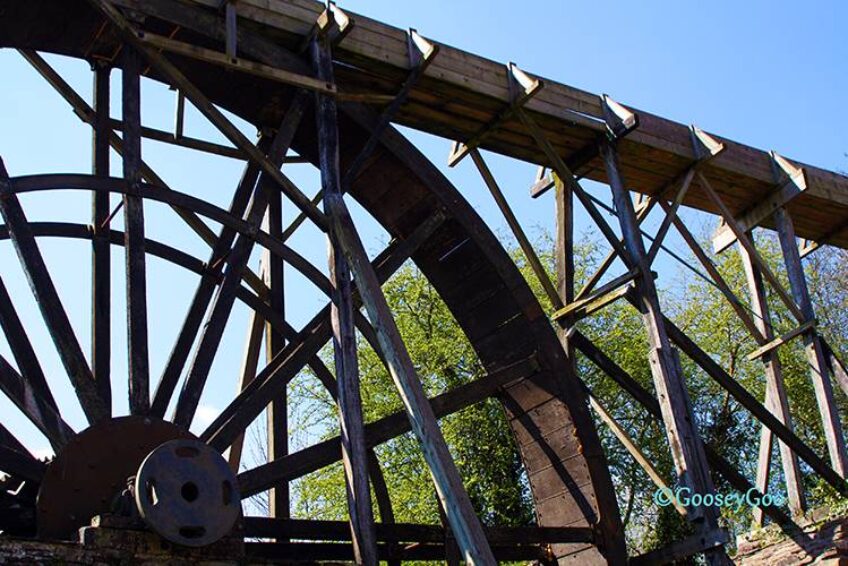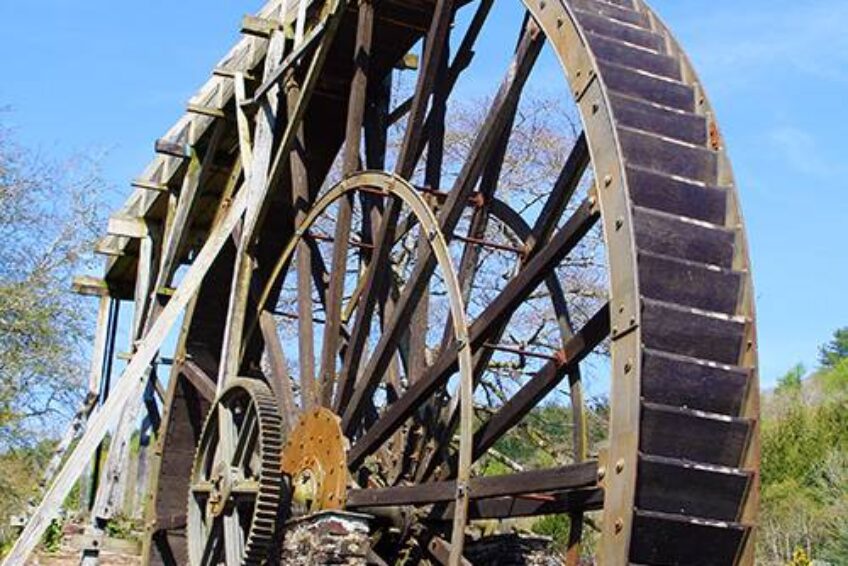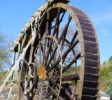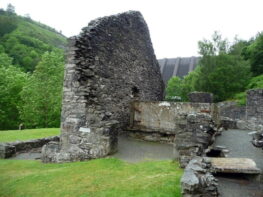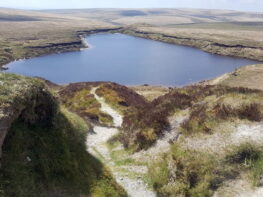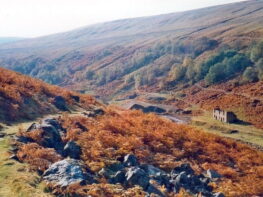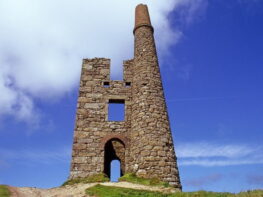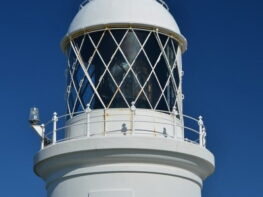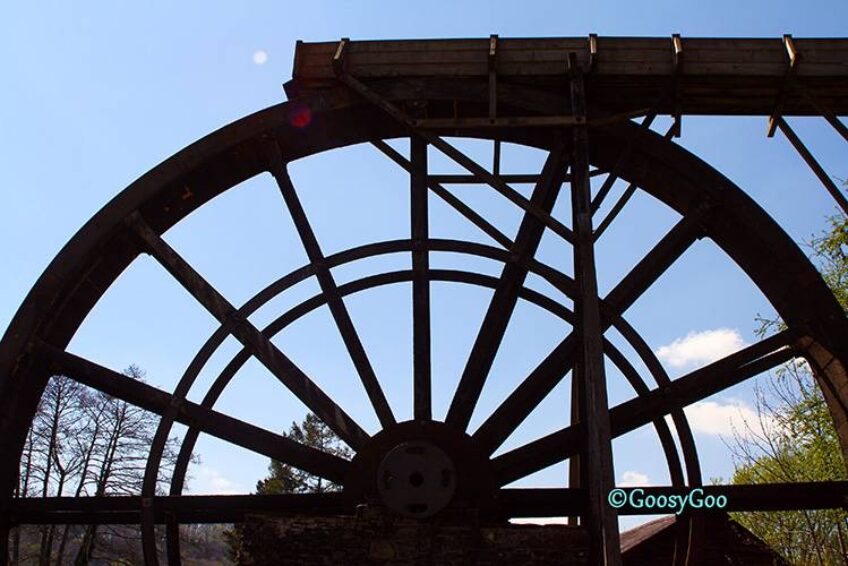
Manganese was discovered in 1774, so in Morwellham Quay terms, was a new metal.
Manganese was used primarily by the glass industry, but also by the cotton mills (for bleaching) and in the iron and steel industry (as a hardening agent).
It was mined in various locations in the region, known as the Tavistock Manganese Mines and brought to Morwellham for processing by horse and cart. There were several water-powered grinding plant, but the Morwellham Quay waterwheel is an edge-running mill, where two upright stones ran off a vertical shaft.
The 32 ft (9.8 m) overshot water wheel once powered the mill for crushing the manganese; and the leat for this wheel was probably installed after the construction of the Tavistock Canal in 1817.
Isambard Kingdom Brunel visited in the 1850’s and sketched the equipment!
In 1920 the original wheel was whisked off for use in the Devon Great Consols Arsenic Mines, and this one was salvaged from China Clay workings at Headon Down, Cornwall, in 1973. It was donated by Watts, Blake and Bearne, with new sections cast by Irons Brothers of Wadebridge, Cornwall. It was rebuilt by Ron Hobley in 1975.
The major breakthrough in the use of Manganese occurred in 1860 by none other than the father of steel, Henry Bessemer. He developed the Bessemer process and designed the Bessemer converter, which utilised manganese in its recipe for steel.
Morwellham, Tavistock, Devon PL19 8JL.

Manganese was discovered in 1774, so in Morwellham Quay terms, was a new metal.
Manganese was used primarily by the glass industry, but also by the cotton mills (for bleaching) and in the iron and steel industry (as a hardening agent).
It was mined in various locations in the region, known as the Tavistock Manganese Mines and brought to Morwellham for processing by horse and cart. There were several water-powered grinding plant, but the Morwellham Quay waterwheel is an edge-running mill, where two upright stones ran off a vertical shaft.
The 32 ft (9.8 m) overshot water wheel once powered the mill for crushing the manganese; and the leat for this wheel was probably installed after the construction of the Tavistock Canal in 1817.
Isambard Kingdom Brunel visited in the 1850’s and sketched the equipment!
In 1920 the original wheel was whisked off for use in the Devon Great Consols Arsenic Mines, and this one was salvaged from China Clay workings at Headon Down, Cornwall, in 1973. It was donated by Watts, Blake and Bearne, with new sections cast by Irons Brothers of Wadebridge, Cornwall. It was rebuilt by Ron Hobley in 1975.
The major breakthrough in the use of Manganese occurred in 1860 by none other than the father of steel, Henry Bessemer. He developed the Bessemer process and designed the Bessemer converter, which utilised manganese in its recipe for steel.
Morwellham, Tavistock, Devon PL19 8JL.

